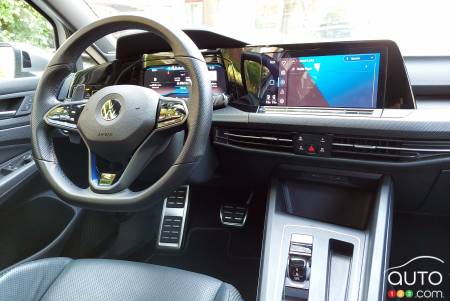With each new vehicle launch, manufacturers reinforce their commitment to simplifying the lives of motorists thanks to this or that wonderful new technology. Certainly, many of them are welcome; some of them actually do simplify our lives. But others, not so much.
Case in point, touchscreens with multiple menus and touch-sensitive buttons (some of them dual-purpose), ubiquitous in new and modernized models now on the market. We haven’t been alone in arguing over the years that for many basic functions like audio control or activating heated seats, for example, nothing replaces the efficiency of a good old physical button or switch. Having to access a command via a touchscreen is just not as quick or simple, or safe.
And that is precisely what a new Swedish study has just concluded. It found that touchscreens with their numerous menu pages can cause real distractions for drivers on the road.
Browse cars for sale available near you

The study by Swedish car magazine Vi Bilägare came to the rather predictable conclusion that buttons are safer than touchscreens by calculating the time it takes to perform simple, routine operations. The magazine asked test drivers chosen among its readers to perform four common tasks while driving.
Before calculating the times, these drivers were given the opportunity to familiarize themselves with how to perform these tasks in the 12 different models chosen for the exercise. The lot included the Tesla Model 3 and the BMW iX, both of which have touchscreens. A Seat León and a Dacia Sandero were also put to the test. The magazine also used a 17-year-old Volvo V70 with nothing but physical buttons - and a ton of them at that - as a control vehicle, if you will.
The magazine then timed drivers completing each task while driving their respective vehicles at 110 km/h. Unsurprisingly, those in the old Volvo completed the four tasks most quickly, taking only 10 seconds on average.
Performing the four tasks in the new BMW iX took three times as long, 30.4 seconds.

Vi Bilägare points out that the lack of buttons is not the only problem. The way the multimedia systems are designed also plays an important role. The system in the BMW iX, for example, has one of the most complex interfaces ever designed, the magazine says.
Of course, what's most concerning is that every extra second spent performing an operation represents dozens, if not hundreds, of feet traveled without the driver’s focus being on the road.
The message is clear: simplify. The most frequently used functions need to be quick, easy and intuitive to accomplish.
This is all a bit ironic given that today’s generation of new vehicle models are safer than ever otherwise. But in most cases, they’re also designed to force us to do things that aren’t safe to do while driving.
On the road, concentration is required at all times. It’s thus highly recommended that motorists take the time to adjust settings before setting off, so eyes and concentration can be kept on the road ahead.
